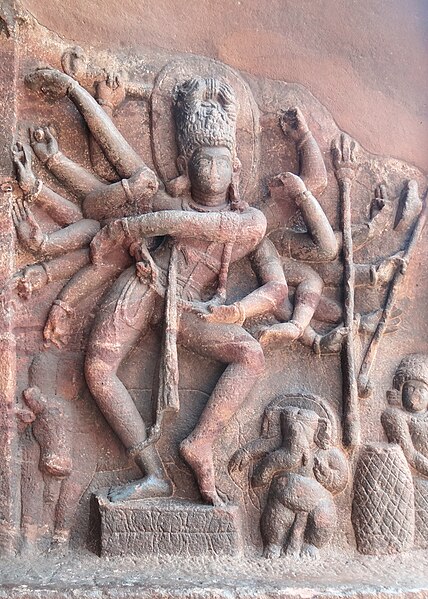The Nāṭya Shāstra is a Sanskrit treatise on the performing arts. The text is attributed to sage Bharata, and its first complete compilation is dated to between 200 BCE and 200 CE, but estimates vary between 500 BCE and 500 CE.
Shiva as the Lord of Dance
The Natyashastra discusses dance and many other performing arts.
The Natyashastra influenced other arts in ancient and medieval India. The dancing Shiva sculpture in Badami cave temples (6th–7th century CE), for example, illustrates its dance movements and Lalatatilakam pose.
Image: Anjum Bharti in Sari, for Kathak India Dance Arts
Sanskrit is a classical language belonging to the Indo-Aryan branch of the Indo-European languages. It arose in South Asia after its predecessor languages had diffused there from the northwest in the late Bronze Age. Sanskrit is the sacred language of Hinduism, the language of classical Hindu philosophy, and of historical texts of Buddhism and Jainism. It was a link language in ancient and medieval South Asia, and upon transmission of Hindu and Buddhist culture to Southeast Asia, East Asia and Central Asia in the early medieval era, it became a language of religion and high culture, and of the political elites in some of these regions. As a result, Sanskrit had a lasting effect on the languages of South Asia, Southeast Asia and East Asia, especially in their formal and learned vocabularies.
Image: Bhagavad Gita 19th century Illustrated Sanskrit Chapter 1.20.21
Image: Sanskrit College 1999 stamp of India
Rigveda (padapatha) manuscript in Devanagari, early 19th century. The red horizontal and vertical lines mark low and high pitch changes for chanting.
A 17th-century birch bark manuscript of Pāṇini's grammar treatise from Kashmir








